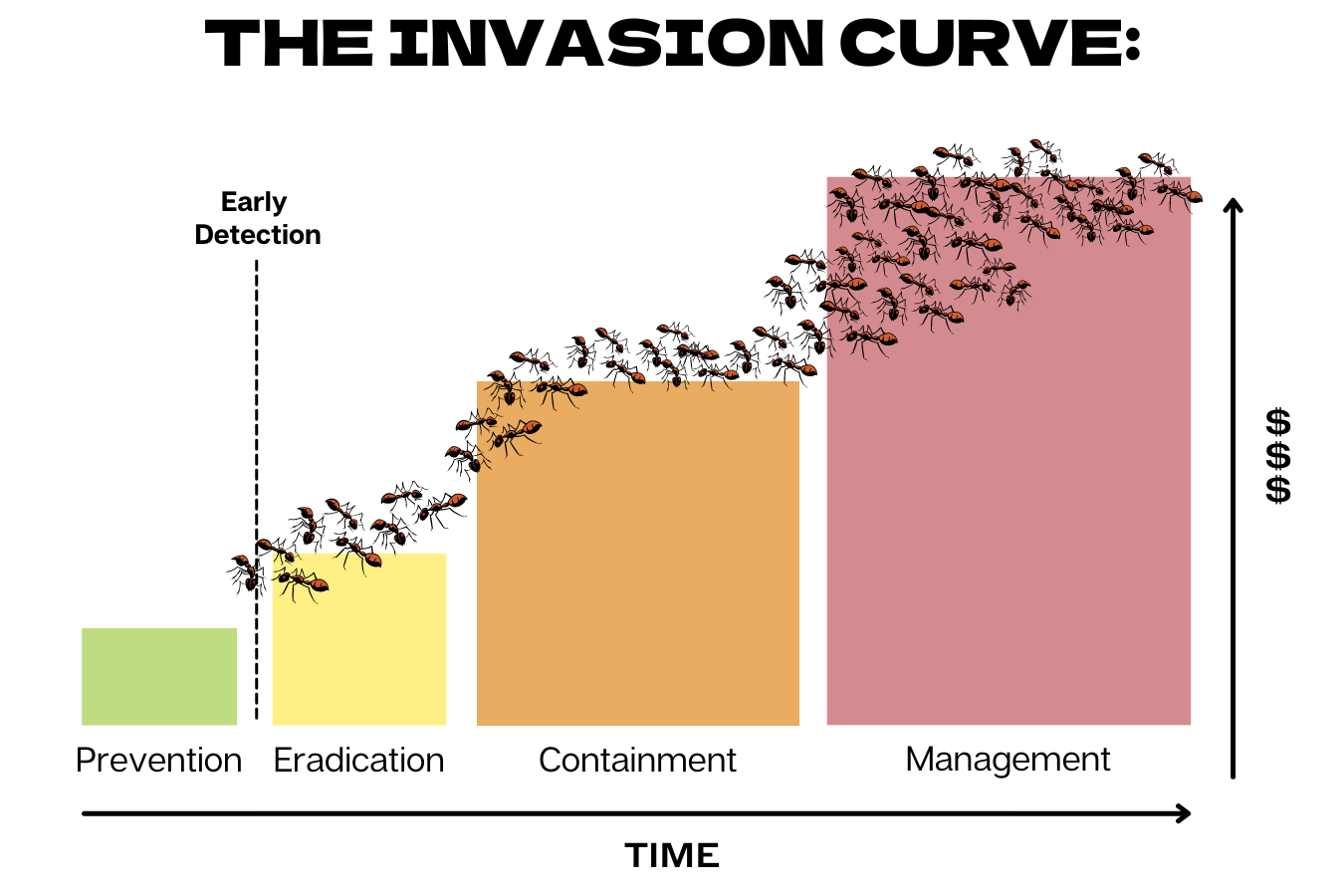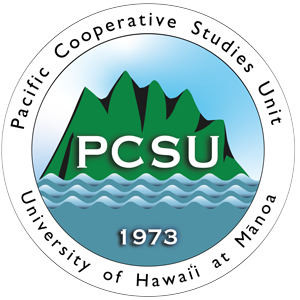Invasive Species in Hawai‛i
Invasive species have a two-part definition: first, they must have been introduced to an area, arriving through human intervention. Introduction alone does not mean a species is invasive; many introduced species can have deep importance for us. They may be culturally important plants such as ti leaf or kalo, key agricultural crops like mac nuts and coffee, beneficial insects like bees and butterflies, or simply beloved for their beauty, like bird-of-paradise. Although none of these species are biologically native to the islands (native species have ancestors who arrived on their own via wind, wings, or waves), they have become a critical part of the Hawaiian landscape and the human relationships with the natural environment of our islands.
Of the hundreds of species humans have introduced to Hawai‛i over the years, several dozen plants and animals we now know have caused serious harm. That is the second part of the definition: by federal law, invasive species are those which cause or could cause harm in at least one of three areas: the environment, the economy, or human health. Sometimes, when a species arrives in a new environment without the diseases, predators, and competition that it evolved within its native range, it can get out of control. Albizia trees are a great example: in Hawai‛i, they are the fastest-growing tree in the world, but this is not true in their native range, where their growth is restricted by natural enemies.
An invasive species is introduced to Hawai‛i (through human intervention) and causes significant harm in at least one of three areas:



Island ecosystems are more vulnerable to invasion by harmful species that may not face the stiff competition for nutrients and resources that they would in a continental system. On continents, habitat destruction is the current top threat to endangered plants and animals, but on islands, the #1 threat is invasive species. Hawai‛i has the distinction of having more plants and animals on the Endangered Species list than any other state. Globally, Hawaii is considered both a hotspot of biodiversity and a hotspot of extinction.
Of the World’s 100 Worst Invasive Species, as designated by the International Union for the Conservation of Nature (IUCN), half are already present in Hawai‛i. And this list does not even include many of our worst economic pests, like tephritid fruit flies and coffee berry borer; high-risk health threats, like semi-slug & the rat lungworm parasite; or new environmental threats like rapid ‛ōhi‛a death. Because of our unique Hawaiian environment, many organisms that have little effect elsewhere have big impacts here.
Currently, there is no single “list” in Hawai‛i for the top invasive species. Some are currently widespread on some islands but absent on others, some are currently still restricted to limited areas – which requires sustained and intensive effort on the part of many agencies and landowners. Ask what the “top” invasives are, and the answers will differ for a farmer in Kohala, a rancher in Ka’ū, a Park Ranger in Volcano, or a homeowner in Puna. A good list of the most impactful invaders can be found on the Hawai‛i Invasive Species Council website.

